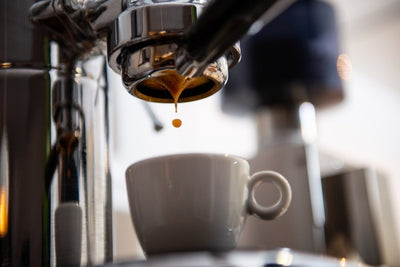
Cool Beans: Why You Should Try Cold Brew Coffee
If you love coffee, you have probably heard of cold brew but may not have sampled it yet.
Cold brew coffee has surged in popularity in recent years—and for good reason. Unlike traditional hot-brewed coffee, cold brew is made by steeping coarsely ground coffee beans in cold water for an extended period (usually 12–24 hours). This process results in a distinct flavour profile and a variety of potential benefits.
What is the history of cold brew?
It’s tempting to think that cold brew coffee is a modern innovation. But this method of brewing can be traced back to the 17th century when a method called Kyoto-style coffee (or Kyoto drip) emerged in Japan. This slow, delicate brewing process used ice water to extract coffee drop by drop over many hours.
It’s believed that Dutch traders introduced cold coffee brewing to Japan, where it was refined and adopted for its elegant presentation and low acidity. Dutch traders in the East Indies (Indonesia) may have brewed coffee with cold water to preserve it during long voyages. This method certainly offered a practical benefit: cold-extracted coffee doesn’t go stale as quickly as hot coffee, making it ideal for transport and storage.
Cold brew remained a niche method until the 1960s, when Todd Simpson, a chemical engineering student at Cornell University, invented the Toddy Cold Brew System after being introduced to cold brew in Guatemala. His invention helped standardise the method in North America.
By the mid-2010s, cold brew had become a staple in cafes across the U.S., UK, and beyond. By 2018 cold brew was one of the fastest-growing segments in the RTD (Ready-To-Drink) coffee market.
What are the benefits of cold brew?
- Smoother, less acidic taste: Cold brew is naturally lower in acidity because it's not exposed to heat. This makes it gentler on the stomach and ideal for people with acid reflux or sensitivity to acidic foods.
- Flavour: It’s smoother and less bitter than other forms of coffee and features subtle chocolate or caramel notes.
- Higher caffeine content: Cold brew tends to be more concentrated than regular coffee. A typical cold brew can contain up to double the amount of caffeine than hot brewed coffee (unless diluted).
- Less bitter: Without heat, fewer bitter compounds are extracted, producing a mellow, rounded taste when served black.
- Shelf life: Once brewed, cold brew can last in the fridge for 7–10 days.
- Versatile and customizable: Can be served cold or hot (just heat it up without boiling) and is easily mixed with milk, syrups, tonic water, or sparkling water for creative drinks. Cold brew is also a great base for coffee cocktails or functional drinks (like protein shakes or mushroom coffee).
- Health benefits: Like all coffee, cold brew contains chlorogenic acids and polyphenols, which have antioxidant and anti-inflammatory properties. Early research suggests coffee consumption may support heart health, brain function, and metabolic regulation when consumed in moderation.
How to make cold brew coffee at home
1. Select your coffee.
The perfect beans for cold brew can depend on how you plan to use the coffee. If you are going to add milk, most espresso blends would work well. But for black coffee, lighter roasts are good choices. Fans of cold brew tend to favour sweet and fruity coffees such as those of Ethiopian origin. The more delicate central American coffees don’t tend to deliver their full potential in cold brew.
2. Grind your beans
It’s best to grind just before brewing. The fresher the coffee, the better the taste. You'll need a grinder that can produce a coarser grind size than a standard espresso grinder.
3. Add grounds and cold water to brewer
Cold brew can be made using proprietary cold brew equipment or a French press. Always follow the instruction for your brewer and use filtered water as water quality can make all the difference. A 1:4 or 1:5 coffee-to-water ratio is ideal for concentrate, otherwise a 1:12 – 1:15 ratio works well. You may have to experiment to find the right ratio for your chosen coffee. Add cinnamon sticks, vanilla pods, or citrus peel to the grounds before steeping for flavoured coffee.

4. Leave to steep
Your coffee should be left to steep for 12 – 24 hours. After a few brews, you will discover the perfect steeping time for your coffee. Cold brew is best stepped in the fridge as the slower extraction produces smoother results. But the coffee can be steeped at room temperature if necessary.
5. Store your cold brew
Cold brew can be stored for up to seven days in an airtight container without its flavour diminishing. It may be possible to store the coffee for 10 days but this could impact flavour.
Are cool beans for you?
Why not give cold brew a try? If you savour coffee, you will love the taste and what could be more convenient that keeping a supply of delicious coffee concentrate in your fridge? As cold brew is also ideal for flavouring cakes and cocktails, what’s not to like?



Leave a comment